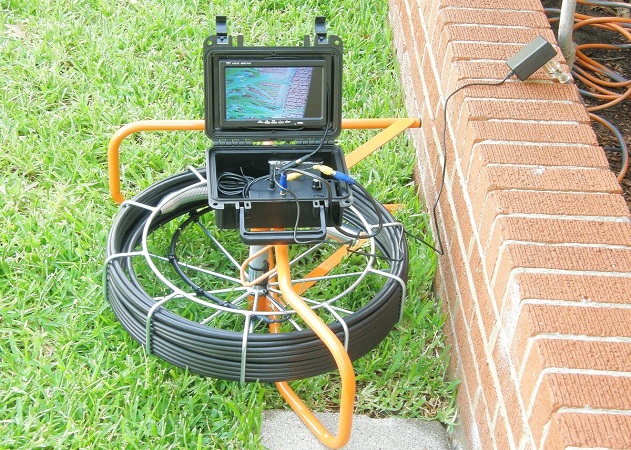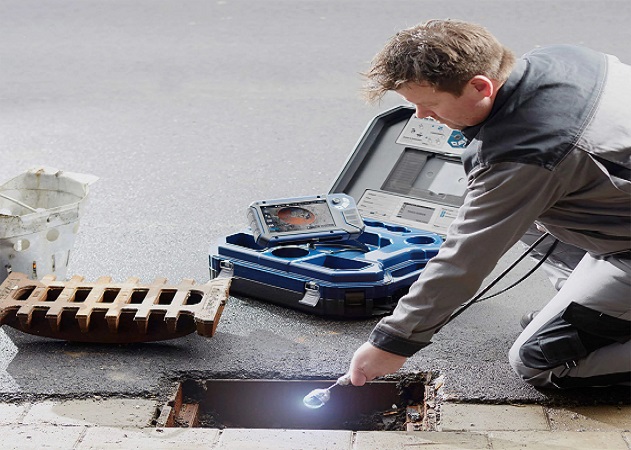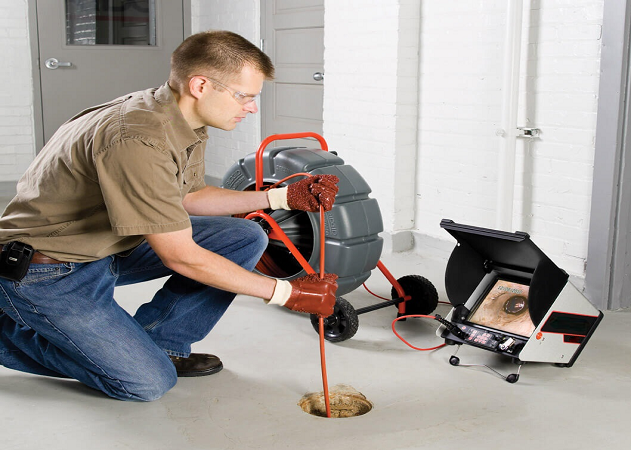A Closer Look at Drain Cameras: Get an Idea of How They Work
In the world of modern plumbing diagnostics and inspections, drain cameras have emerged as a game-changing tool. These innovative devices offer a visual journey into the hidden depths of pipes and drains, providing invaluable insights that help identify issues, assess their severity, and determine the best course of action for repairs.
Today, we’re here to help you understand the inner workings of sewer cameras, demystifying their components and mechanisms, and shedding light on how they have become an indispensable asset for both homeowners and plumbing professionals.
The Anatomy of a Drain Camera

At its core, a drain camera is a compact and robust device designed to navigate the labyrinthine world of pipes and conduits. Let’s break down the key components that make up a sewer camera system.
Camera Head
The heart of the drain camera is the camera head itself. This small, waterproof unit is equipped with high-resolution cameras and powerful LED lights. The camera head’s primary role is to capture clear and detailed visuals of the interior of pipes and drains. These visuals are then transmitted in real time to a display unit, allowing users to assess the condition of the plumbing system.
Cable or Push Rod
The camera head is attached to a flexible cable or push rod, which serves as the vehicle for navigating through the pipes. The cable is designed to be sturdy enough to withstand the challenges posed by varying pipe sizes, bends, and even minor obstructions. The flexibility of the cable ensures that the camera can be maneuvered smoothly through the twists and turns of the plumbing system.
Display Unit
The real-time images captured by the camera head are transmitted to a display unit, where they become visible to the user. This display unit can vary in size and technology, ranging from handheld monitors to tablet-like screens. The high-resolution images provide a clear view of the interior of the pipes, allowing users to identify issues such as blockages, corrosion, leaks, and even invasive tree roots.
Lighting System
Navigating through the darkness of pipes requires adequate illumination. Sewer cameras are equipped with built-in LED lighting systems, strategically placed around the camera head. These lights not only illuminate the surroundings but also enhance the quality of the captured visuals, ensuring that no detail goes unnoticed.
How Drain Cameras Work

The operation of a drain camera involves a seamless combination of technology, engineering, and precision. Here’s a step-by-step breakdown of how these devices work.
Preparation
Before beginning the inspection, the camera head is attached to the cable or push rod. Depending on the complexity of the plumbing system, the camera head’s size and design may vary to accommodate different pipe sizes.
Insertion
The cable, with the camera head at its forefront, is carefully inserted into the pipe or drain being inspected. The flexibility of the cable allows it to navigate through twists, turns and bends without causing damage to the pipes.
Real-Time Visualization
As the camera head advances through the pipes, it captures high-resolution visuals of the interior. These visuals are transmitted in real-time to the display unit, allowing the user to observe the condition of the pipes as if they were right there.
Identification of Issues
While observing the real-time images on the display unit, users can identify various issues such as clogs, blockages, cracks, corrosion, and even structural damage. This detailed visual information provides valuable insights that help in making informed decisions about necessary repairs or maintenance.
Navigation and Retrieval
Using the display unit, the operator guides the camera head through the pipes, inspecting every nook and cranny. If an issue is identified, the camera can be navigated to the precise location of the problem, allowing for accurate assessment and targeted repairs.
The Benefits of Drain Camera Technology

Drain cameras offer numerous benefits for both homeowners and plumbing professionals. Let’s take a look at some of them.
- They provide accurate visual information about the state of the plumbing system, eliminating the need for guesswork.
- Identifying issues with drain cameras is swift and efficient, reducing the time and effort required for troubleshooting.
- Regular inspections can help catch potential problems early, allowing for preventive maintenance and avoiding major issues down the line.
- Early detection of problems means that repairs can be carried out before they escalate, resulting in cost savings for homeowners.
- Drain cameras empower homeowners and professionals to make informed decisions about repairs, replacements, or upgrades based on visual evidence.
The bottom line is, the evolution of sewer camera technology has revolutionized the way plumbing inspections are conducted. By providing a clear and detailed visual assessment of pipes and drains, these devices have become indispensable tools for diagnosing issues, ensuring the efficiency of plumbing systems, and making informed decisions about repairs and maintenance.
Whether you’re a homeowner looking to safeguard your property or a plumbing professional seeking accurate diagnostics, understanding how drain cameras work can empower you to take control of plumbing challenges and maintain the health of your plumbing system. As technology continues to advance, the world beneath our feet becomes more transparent, thanks to the eyes of the sewer camera.



